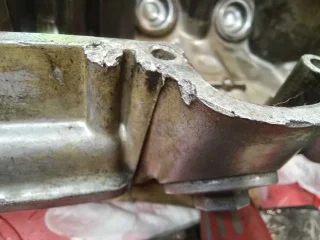Dow introduced Saran wrap in 1949 but we did not see it until 1966 in the form of Glad Wrap (Made by The Glad Products Company in the USA founded in 1963)
These days it is also marketed as GLAD cling wrap.
Either way it makes it easy to apply 518 sparingly with minimal mess and disposal.
View attachment 111013
#
I never saw the point of applying grease to modern gaskets (It seemed to come from the days of cork usage) when the likes of 515 and 518 add an actual seal and make removal easy also.
I still use WellSeal on hard joints, left to tack off for at least 25 minutes (Even the top cylinder head cover which also forms the upper journals for the cam shaft is sealed with WellSeal on my DR780)
Other amazing products, Pledge (First sold in 1958)
Good on everything from engine cases to plastic (and furniture as intended for)
View attachment 111012


